This post may contains affiliate links. Read our full disclosure here.
Imagine a Persian princess sipping spoiled grape juice to end her life—only to stumble upon euphoria instead. This myth, wild as it sounds, kicked off humanity’s obsession with fermented grapes. Archaeologists later found proof: 7,000-year-old wine residue in Iran’s Hajji Firuz Tepe. Turns out, our ancestors were obsessed long before TikTok wine trends.
By 3000 B.C., Egyptians treated it like liquid gold. They buried pharaohs with jars labeled “year 5 of King So-and-So’s reign”—the OG vintage markers. Greeks turned drinking into philosophy, pairing symposiums with Socrates’ rants. But Rome? They industrialized it. Soldiers marched on roman wine rations, while emperors standardized production like ancient sommeliers.

Think modern wine culture’s bougie? Try watering down your Cabernet to 3% alcohol because Plato said so. Or trading amphorae like crypto. From sacred libations to battlefield morale boosters, fermented juice shaped empires. Even today’s “natural wine” movement? Basically Numa’s 700 B.C. laws on organic libations, rebooted.
This isn’t just about grapes. It’s about power, pleasure, and how roman wine pipelines built Europe’s economy. Ready to taste how one drink fermented civilization itself? Let’s decant this story.
Introduction to Wine in the Ancient World
What if your wine rack was an 8,000-year-old jar buried beneath a desert? Early societies didn’t just drink fermented grape juice—they worshipped it. From Mesopotamian taverns to Nile Delta feasts, this liquid rebellion against sobriety became social currency. “Drink like your afterlife depends on it” might as well have been carved into those clay containers.
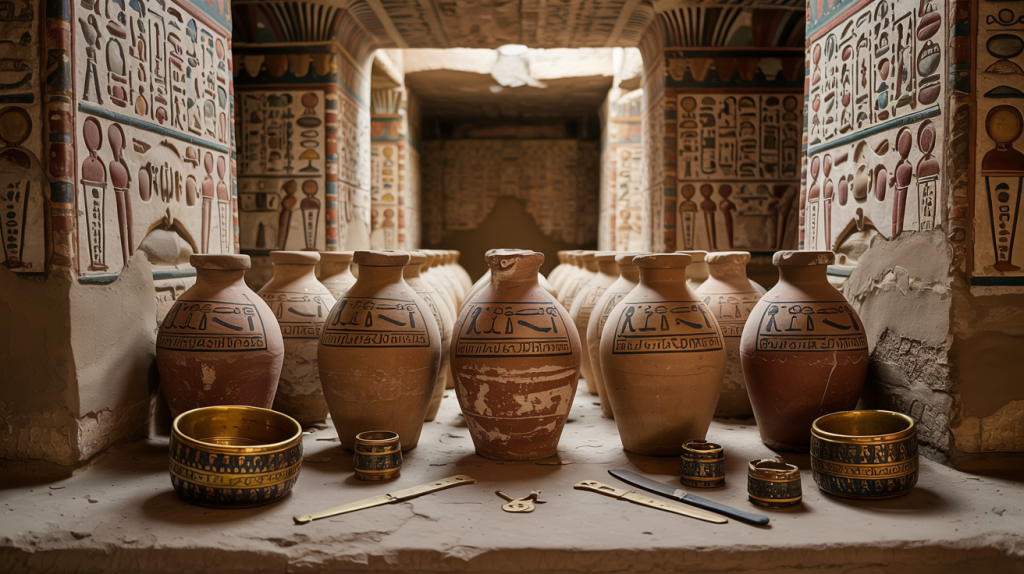
Farmers didn’t need TikTok tutorials for production. They crushed fruit by foot in stone basins, letting wild yeast work its magic. Archaeologists found resin-lined jars in Georgia containing tartaric acid—the OG wine influencer. These weren’t just storage units but time capsules of humanity’s first happy hour.
Rituals turned vineyards into sacred spaces. Sumerian texts describe tavern keepers as priestesses of intoxication. Egyptian tomb paintings show workers stomping grape clusters while accountants tally amphorae—ancient proof that wine culture mixed business with pleasure.
The real flex? How these early vintners standardized production without apps or algorithms. They tracked harvests using lunar cycles and stored vintages in those iconic jars, creating a blueprint modern sommeliers still study. Next time you swirl a glass, remember: you’re tasting humanity’s oldest hustle.
The History of Wine in Ancient World
Buried beneath Georgian soil, 8,000-year-old jars whisper secrets of humanity’s first hangover. Archaeologists found resin-coated pottery here containing tartaric acid—the smoking gun of early wines. This wasn’t just fermented juice; it was a Neolithic revolution. Wild grapes grew like weeds across the Caucasus, but someone decided to crush, store, and perfect their accidental booze.
Fast-forward to Armenia’s Areni-1 cave complex. A 6,100-year-old winery stood ready with fermentation vats and drinking cups—proof that vineyards became intentional business ventures. Phoenician traders later turned this hustle into empire fuel, shipping amphorae across the Mediterranean like ancient Amazon Prime.
Three key shifts defined this era:
- Domestication of grapes with thicker skins for longer shelf life
- Terroir experiments—Georgian qvevri clay jars versus Armenian stone basins
- Trade networks moving beyond “my backyard” to global markets
These weren’t rustic hobbies. Analysis of Iranian pottery reveals standardized wine batches from 5,400 BCE—Stone Age quality control. Etruscan merchants even added pine resin to preserve shipments, creating proto-retinol for sea voyages. Talk about multi-tasking.
By 1200 BCE, vineyards dotted landscapes from Turkey to Sicily. Farmers didn’t just grow grapes; they curated liquid status symbols. Next time you sip a natural orange wine, thank those Georgian ancestors who basically invented hipster viticulture.
Origins and Mythology Behind Wine Production
What if your favorite Cabernet was a divine prank? Meet the gods who fermented chaos. Across the Mediterranean region, myths bubbled up like wild yeast—stories where vines sprouted from blood-soaked earth and mortals traded sanity for ecstasy.
Greek Mythology: The Tale of Dionysus
Dionysus didn’t just gift wine—he weaponized it. Born from Zeus’ thigh (talk about daddy issues), this party-crash deity taught mortals to cultivate vines after his lover Ampelos died falling from a grape-laden tree. Ancient texts claim he traveled through Asia Minor, leaving drunken riots and terraced regions in his wake.
“Wine reveals what’s hidden,” wrote Euripides. Dionysian cults took this literally, blending mystic rituals with all-night raves.
Roman Mythology: Bacchus and Cultural Rituals
Rome rebranded Dionysus as Bacchus but cranked up the hustle. By the 1st century BCE, his festivals became marketing ops for vineyard owners. Temples displayed frescoes of vines swallowing cities—a metaphor for wine’s grip on empire-building.
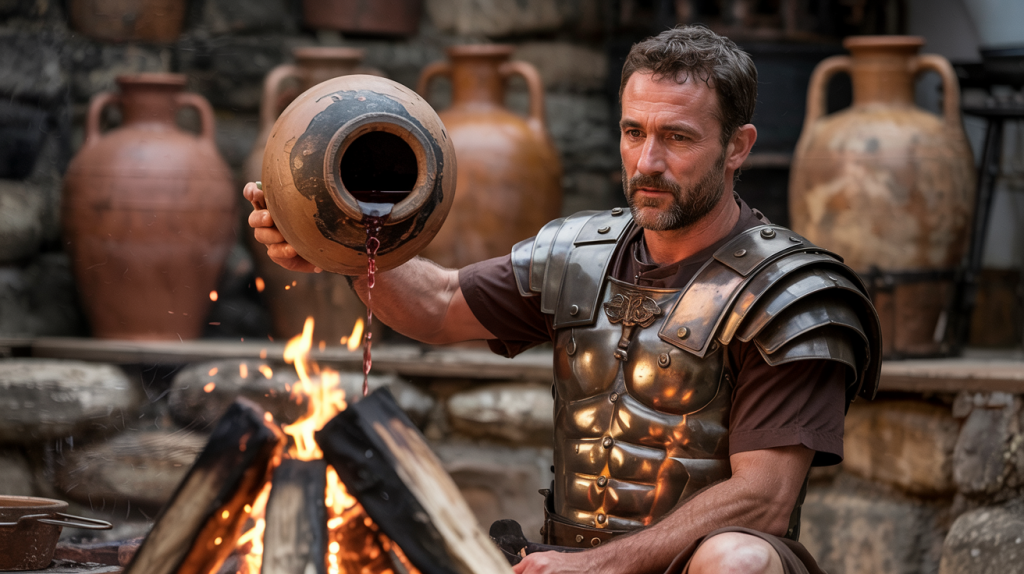
| Aspect | Greek Dionysus | Roman Bacchus |
|---|---|---|
| Symbol | Thyrsus (pine-cone staff) | Grape clusters |
| Rituals | Chaotic mysteries | State-sanctioned festivals |
| Legacy | Philosophical drinking | Commercial vineyards |
While Greeks debated ethics at symposia, Romans standardized region-specific blends. Bacchic temples in Pompeii even had wine menus—proof that divine inspiration fuels capitalism.
Early Cultivation and Domestication of the Grape
Forget moonshine—Neolithic vintners were busy biohacking vines 8,000 years before CRISPR. Archaeologists uncovered the smoking gun: clay jars in Georgia’s Shulaveris-Gora packed with tartaric acid residue. This wasn’t happy accident juice. These early farmers selectively bred wild varieties, transforming scraggly climbers into boozy goldmines.
Archaeological Evidence from the Caucasus and Beyond
The Caucasus became humanity’s first viticulture lab. Here’s their playbook:
- Cherry-picking hermaphroditic wild vines (no more relying on nearby male plants)
- Propagating cuttings like prehistoric NFTs to lock in desirable traits
- Designing qvevri clay fermenters—nature’s original temperature-controlled barrels
Genetic sleuthing reveals a juicy twist. Recent studies show domesticated grapes’ closest wild relatives party along the Tigris and Euphrates. Talk about a Fertile Crescent glow-up.
Morphological receipts don’t lie. Sixth-millennium BCE Armenian seeds show plumper profiles than their wild cousins—proof of Stone Age selective breeding. By Roman times, farmers curated over 90 varieties, from sweet dessert grapes to acid bombs perfect for aging.
This wasn’t just farming. It was liquid alchemy—turning sunlight into social currency. Every modern Cabernet or Chardonnay whispers secrets from those first Caucasus vine whisperers.
Viticulture Practices in Ancient Civilizations
While TikTok influencers hawk “life hacks,” Roman agronomists were crushing vineyard optimization 2,000 years ago. Their playbook? Precision pruning, military-grade logistics, and a hustle that’d make Silicon Valley blush.
Greek Techniques and Vineyard Management
Greece’s vintners didn’t just grow grapes—they curated them. Trellising vines on wooden frames became standard practice, boosting airflow and sun exposure. Farmers handpicked slopes facing southwest, intuitively grasping terroir centuries before the term existed.
Columella’s *De Re Rustica* spills the tea: “Prune ruthlessly—the vine’s vigor lies in its scars.” These methods birthed Europe’s first industry-grade vineyards, with yields tracked using lunar cycles and soil amendments like crushed seashells.
Roman Innovations in Vine Training and Pruning
Rome took Greek blueprints and added empire-scale ambition. Their practices read like a tech startup’s growth manual:
- Training vines on chest-high stakes (the OG vertical farming)
- Double-pruning systems to maximize fruit clusters
- Regional specialization—Campania for bold reds, Latium for crisp whites
Varro’s journals reveal military precision: “Vines spaced eight feet apart yield 20% more juice.” By 100 CE, standardized industry protocols turned wine into Rome’s second-largest export—right behind conquests.
From backyard batches to industry titans, these practices built frameworks still swirling in Napa Valley boardrooms today. Proof that good taste never goes out of style—even after 2,000 years.
The Spread of Winemaking Throughout the Mediterranean
Think ancient globalization was all about silk and spices? Meet the OG liquid influencers: Phoenician wine merchants. Their ships carried more than cargo—they transported entire cultivation systems across the Mediterranean. From Lebanon’s cedar forests to Spanish coastlines, Vitis vinifera vines became botanical colonists reshaping landscapes.
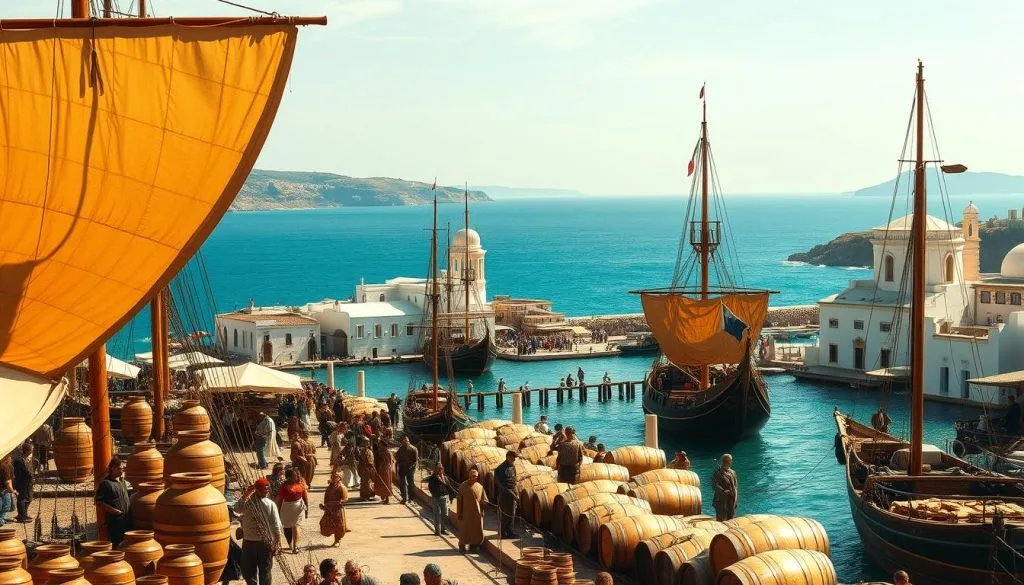
Cultural Colonization and Exchange
Phoenicians didn’t just trade wine—they planted vinifera cuttings at every port. Carthage became a viticulture powerhouse, while Greek settlers turned southern Italy into a Dionysian playground. These weren’t casual swaps. Tavern menus in Marseille circa 600 BCE blended Anatolian fermentation tricks with Egyptian aging methods—the ancient equivalent of fusion cuisine.
Trade Routes and Regional Adaptations
Maritime highways birthed terroir diversity. Cyprus developed sun-baked sweet wines using clay pots, while Etruscans near Rome perfected crisp whites in coastal breezes. Key routes fueled this evolution:
| Route | Contribution | Modern Parallel |
|---|---|---|
| Tyre to Cadiz | Spread drought-resistant vinifera | Napa’s clone selections |
| Athens to Massalia | Exchanged trellising techniques | Vineyard management apps |
| Carthage to Sardinia | Hybridized North African/Italian grapes | Natural wine collabs |
This cross-pollination seeped into daily life. Iberian elites mixed Greek symposium rituals with local harvest festivals. Workers in Syrian vineyards sang Phoenician work chants while pruning. Today’s “old-world blends”? Just rebooted versions of these ancient mashups.
Through conquest and commerce, cultivation knowledge became liquid currency. The same vinifera grapes that fueled Roman orgies now fill Trader Joe’s shelves—proof that good taste outlasts empires.
The Role of Wine in Daily Life and Rituals
Picture this: Plato debating ethics while tipsy, or Julius Caesar clinking cups with rivals. Wine wasn’t just juice—it was social glue. From Athenian think tanks to Roman power lunches, fermented grapes fueled civilization’s most pivotal moments.
Symposia and Convivium Traditions
Greek symposia were OG TED Talks with better cocktails. Men reclined on couches, mixing watered juice (3:1 ratio, per Plato’s rules) with philosophy. The host’s krater—a massive mixing bowl—dictated the vibe. Too much wine? Cue embarrassing poetry slams.
Romans upgraded this to convivium—dinner parties where drinking became a power move. Elite homes displayed imported amphorae like modern mixology bars. Your cup’s material (clay vs. gold) screamed your tax bracket.
| Aspect | Greek Symposia | Roman Convivium |
|---|---|---|
| Focus | Debates & poetry | Networking & deals |
| Pouring Rules | Water first, then wine | Unmixed for elites |
| Social Impact | Democratic ideals | Class reinforcement |
Religious Ceremonies and Libations
Every temple happy hour started with libations. Greeks poured juice offerings to Dionysus before symposiums, while Romans splashed Falernian wine at Bacchus shrines. “Partake, and the gods listen,” priests declared—ancient influencer marketing at its finest.
In Egypt, drinking rituals doubled as medical care. Temple menus paired wine with honey for sore throats. Even funerals required a parting glass—tomb art shows families toasting ancestors with lotus-shaped cups.
From Senate floor to sacred space, wine’s part in daily life proved universal. Today’s “rosé all day” culture? Just a remix of antiquity’s liquid diplomacy.
Innovations in Winemaking Technology
Imagine Roman engineers swapping chisels for grape crushers to fuel their empire’s thirst. While Instagram reels hype “disruptive tech,” ancient vintners quietly invented the original production hacks. Their tools didn’t just squeeze grapes—they squeezed time itself, turning harvests into liquid empires.
From Feet to Force Multipliers
Foot-trodden grapes were so 4000 B.C. By Caesar’s era, beam presses did the heavy lifting. These wooden monsters could extract 30% more juice than bare feet—ancient ROI at its finest. Archaeologists found one in Pompeii weighing two tons, capable of crushing a ton of grapes daily.
| Press Type | Innovation | Modern Parallel |
|---|---|---|
| Foot | Human-powered chaos | DIY fermentation kits |
| Beam | Leverage physics | Industrial crushers |
| Screw | Adjustable pressure | Hydraulic presses |
Storage got a glow-up too. Forget leaky baskets—Romans used amphorae lined with pine resin. These airtight vessels became the Tupperware of antiquity, preserving vintages for years. Soldiers carried them like protein shakes, while elites aged Falernian wine in clay cellars.
Demand exploded as quality soared. Urban professionals wanted their mulsum (honeyed wine) paired with oysters—the avocado toast of 100 A.D. Tavern menus listed press types like coffee roasts today: “Today’s special: Beam-pressed Trebbiano.”
This wasn’t just about food pairings. Improved storage let vineyards ship globally, creating the first luxury export economy. Next time you swirl a glass, thank those ancient engineers who turned fruit into futures.
Prominent Wine Producing Regions of Antiquity
Before Napa Valley became a flex, ancient vintners turned Mediterranean dirt into liquid clout. Certain parts of the map didn’t just make wine—they minted status symbols. From volcanic slopes to island microclimates, terroir was the original flex.
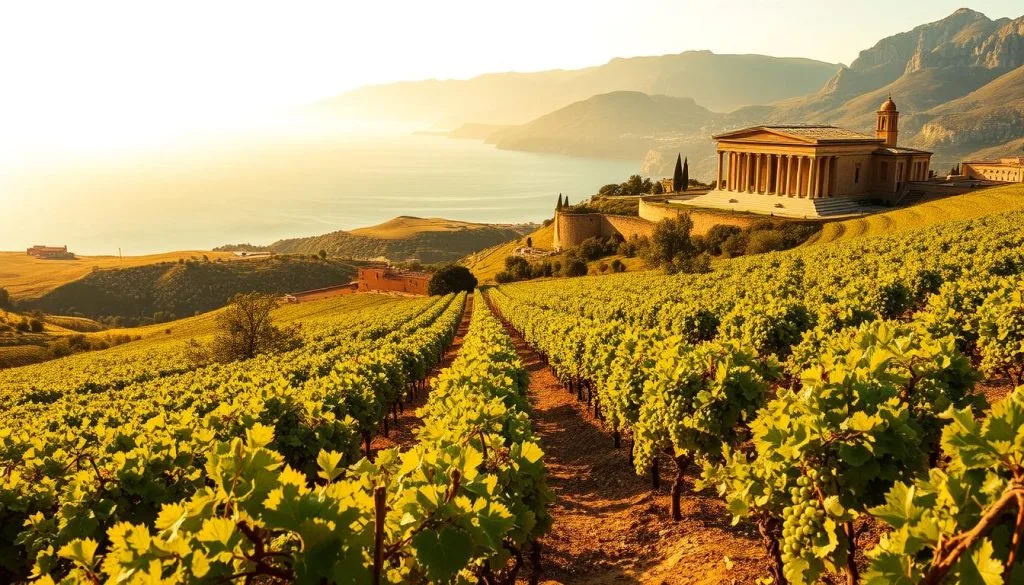
Italian Vineyards and Renowned Estates
Rome’s Caecuban vineyards were the Dom Pérignon of their day. Grown in drained marshlands near Naples, this juice fueled Nero’s parties and Julius Caesar’s victory laps. Pliny the Elder called Falernian wine “parts fire, parts silk”—a $2,000-a-bottle Bordeaux prototype.
Campania’s slopes became the blueprint for luxury. Estates near Pompeii operated like Gucci factories, stamping amphorae with producer names and vintage years. Soldiers carried these bottles as currency—proof that terroir trumped gold coins.
Greek Islands and Levantine Trade Hubs
Chios didn’t just export wine—it sold vibes. The island’s signature white became TikTok-famous in antiquity, shipped across the sea in branded amphorae. Rhodes? Think of it as the ancient Amazon Prime hub, moving 30,000+ jars annually.
Levantine ports like Tyre turned grapes into empire fuel. Phoenician merchants blended Lebanese mountain grapes with Cypriot techniques, creating hybrid pours that funded Carthage’s navy. Their secret? “Always keep the customer thirsty.”
| Region | Signature Move | Modern Equivalent |
|---|---|---|
| Falernian | Aged 20 years in smoke-filled cellars | Opus One |
| Chios | Resin-infused whites | Natural orange wine |
| Tyre | Mixed-region amphorae blends | Private label collabs |
These examples prove one truth: good dirt never goes out of style. Today’s sommeliers still chase that 2,000-year-old sea-kissed magic—just with fancier labels.
Viniculture in Ancient Egypt and the Nile Delta
Pharaohs didn’t just build pyramids—they engineered liquid immortality. Along the Nile’s fertile north, vintners crafted wines so precious they accompanied rulers into eternity. Tomb excavations reveal meticulous grape varieties selection and resin-sealed amphorae—proof that Egypt’s wine game rivaled its architectural marvels.
Divine Fermentation Techniques
Egyptian winemakers operated like ancient sommelier-scientists. They:
- Crushed grapes in linen sacks to filter impurities—a Bronze Age clarification hack
- Labeled jars with vineyard locations and vintages, creating the first appellation system
- Used north-facing cellars for slow fermentation, maximizing flavor complexity
Scorpion I’s tomb held 700 wine jars—some containing traces of figs and herbs. This wasn’t just booze. It was a value-added product line for the afterlife’s elite.
| Egyptian Innovation | Mediterranean Counterpart | Modern Equivalent |
|---|---|---|
| Linen filtration | Greek basket presses | Micro-oxygenation |
| Resin-lined amphorae | Roman pine-pitch barrels | Synthetic corks |
| Vintage labeling | Phoenician cargo manifests | QR code traceability |
Funerary texts describe Osiris receiving wine offerings “to ignite his divine blood.” Workers at Delta vineyards sang hymns while pruning—rituals that turned agriculture into sacrament. When Tutankhamun’s 26 labeled jars surfaced, they weren’t just storage. They were résumés for the gods.
DNA analysis of grape varieties found in Delta tombs reveals a shocking twist: some matched Levantine species. Turns out, Egypt’s wine value chain included ancient “import substitution” strategies—grow foreign vines locally to cut trade costs. Move over, Napa—the real OG viticulturists wore linen kilts.
Wine Trade and Economic Impact in Antiquity
Forget Bitcoin—amphorae of Falernian were antiquity’s blue-chip stocks. Rome’s wine industry operated like Wall Street with togas, turning fermented grapes into geopolitical leverage. By 100 CE, merchants shipped 40 million liters annually across the Mediterranean, using standardized clay jars as “liquid contracts” that built Europe’s first luxury economy.
Elite white wine from Campania’s slopes traded like rare NFTs. Pliny the Elder gushed over Opimian vintages aged 20 years—so exclusive even emperors hoarded bottles. Meanwhile, Gaul’s taverns sloshed with cheap plonk, proving Rome mastered market segmentation:
| Category | Price per Amphora | Buyers |
|---|---|---|
| Falernian (premium) | 480 sesterces | Senators, generals |
| Hispanic bulk red | 30 sesterces | Soldiers, dockworkers |
| Galliac white wine | 120 sesterces | Merchants, mid-tier elites |
Domitian’s 92 CE vineyard ban beyond the Alps wasn’t temperance—it was market manipulation. By restricting Gallic wine ancient production, Rome kept provinces thirsty for Italian imports. Amphorae stamps reveal ruthless branding: “FALERNUM” etched like Supreme logos on clay.
Urban pop-ups called tabernae vinariae became ancient speakeasies. Excavations in Lyon show shelves organized by region—Pompeian reds here, Aegean white wine there. Soldiers paid bonuses in wine credits, while maritime insurance covered spoiled shipments. This wasn’t just trade. It was capitalism’s first fermentation.
Scientific Analysis and Archaeological Discoveries
Modern labs now play detective with ancient grape stains. Using tools like gas chromatography, researchers decode 8,000-year-old wine trade receipts etched into pottery. Take the Midas Tomb in Turkey—chemical traces revealed a boozy cocktail of fermented grapes, barley, and honey. Turns out, King Midas preferred mixology long before TikTok bartenders.
Chemical Residue Analysis and Tartaric Acid
Tartaric acid is the OG smoking gun. When scientists found it in Georgian jars from 6000 BCE, it rewrote the story wine timeline. Pliny the Elder nailed it first: “Wine’s soul lies in its tartness.” Modern mass spectrometry confirmed his hunch, identifying ancient vintners’ secret weapon—resin linings to prevent spoilage.
Key breakthroughs:
- DNA analysis tracing modern grapes to Armenian ancestors
- Neutron activation exposing clay origins of Roman amphorae
- Polyphenol fingerprints in Spanish urns proving 2,000-year preservation
Significant Finds in Tombs and Excavated Sites
Abydos’ tombs spilled more than secrets. Scorpion I’s burial site held 700 wine jars—some still containing fig-infused plonk. But the Carmona discovery tops them all: a Roman urn with cremated bones marinating in wine trade liquid gold. Nearby, a woman’s urn held perfume and silk—gender-specific afterlife swag.
“Wine outlives empires,” wrote Pliny, unaware future scientists would toast his accuracy. His notes on regional aging techniques matched residue patterns in Campanian cellars.
These finds don’t just validate the story wine—they rewrite it. Every chemical signature is a love letter from antiquity’s sommeliers, proving good taste never expires.
The Influence of Wine on Art, Culture, and Literature
What do Homer’s Odyssey and Beyoncé’s Lemonade have in common? Both use fermented grapes as cultural shorthand. Ancient artists used wine to make poetic metaphors pop long before hashtags existed. Dionysian mosaics in Pompeii show the god lounging with grape clusters—a flex of divine swagger that’d make Kanye nod.
Greek playwrights wine also starred in plot twists. Euripides’ The Bacchae framed intoxication as rebellion: “The god’s wine cracks open mortal minds.” Roman poets like Horace dropped lines like “Nunc est bibendum” (Now is the time to drink) that still grace modern cocktail napkins.
Vases weren’t just storage—they were canvases. Athenian pottery showed drinkers debating philosophy, while Egyptian tomb murals paired wine with lotus motifs. Even religious art got tipsy: Christian mosaics reimagined water-to-wine miracles as divine mic drops.
Literature used wine as a metaphor for life’s highs and lows. Sumerian hymns praised “honeyed wine” for soothing sorrows, while Sappho compared love to “unmixed libations.” Fast-forward to today: TikTok’s #WineMom trend? Just bacchanalia in yoga pants.
“Bacchus ever fair and ever young… Drunkenness must his triumphs share.” – Alexander Pope, riffing on ancient themes
From Dionysian raves to Insta-worthy charcuterie boards, wine produced cultural glue. Its symbolic weight—ecstasy, rebellion, communion—still intoxicates creators. Whether sipped in symposiums or subway ads, it’s proof that good juice never goes out of style.
Challenges in Ancient Viticulture and Winemaking
Ever tried keeping kombucha alive in a clay pot during a heatwave? Early vintners faced worse. Without thermometers or pH strips, they battled sour batches and angry gods. Spoilage rates hit 40% in some regions—enough to make a Minoan merchant cry into his amphora.
Three main enemies stalked ancient winemaking:
- Mold attacks turning grapes to mush mid-ferment
- Leaky storage vessels inviting vinegar microbes
- Phylloxera-like pests devouring roots
Desert climates posed their own drama. Nile Delta vintners dug irrigation canals while Phoenicians grafted drought-resistant vitis sylvestris onto rocky slopes. Yet even failures sparked genius—resin-lined jars from 5400 BCE became the OG Tupperware for preserving vintages.
| Problem | Ancient Fix | Modern Parallel |
|---|---|---|
| Oxidation | Pine resin sealants | Sulfite additives |
| Low yields | Manual cross-pollination | Clone selection |
| Soil depletion | Ash fertilizers | Biochar supplements |
Climate swings reshaped entire viticulture maps. A 300-year cold snap around 1200 BCE wiped out northern ancient world vineyards, forcing survivors to breed hardier white grapes. Meanwhile, Roman tech bros engineered screw presses that tripled juice extraction—proving crisis fuels innovation.
From Babylonian mold diaries to Egyptian moon-phase harvest charts, these hustlers wrote the playbook modern oenology still follows. Their lesson? Great wine isn’t made—it’s fought for.
Legacy of Ancient Winemaking Practices in the Modern World
What do Georgian qvevri jars and Napa’s concrete eggs share? A 8,000-year-old playbook. Today’s vintners aren’t disrupting—they’re rebooting ancient code. From buried clay fermenters to lunar harvest cycles, Stone Age tech fuels modern liquid alchemy.
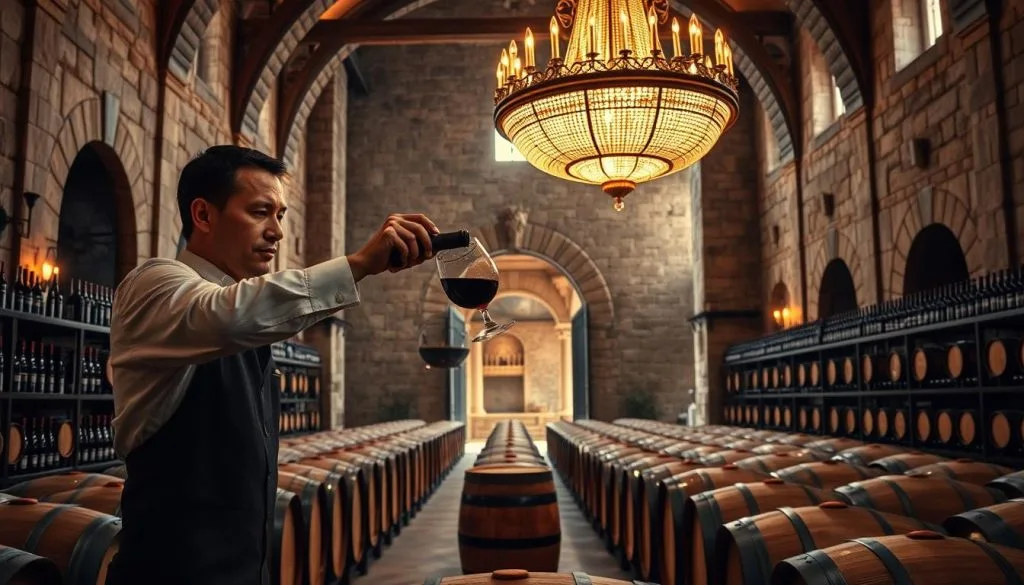
Roman pruning manuals still guide vineyard management. Regions like Tuscany use chest-high trellises identical to those in Pompeii frescoes. Meanwhile, natural wine producers replicate Mesopotamian methods: wild yeast, zero additives, and foot-trodden grapes. “New school” is just old school with Instagram filters.
| Ancient Technique | Modern Adaptation | Regions Using It |
|---|---|---|
| Clay amphorae aging | Concrete “eggs” | Georgia, California |
| Resin-lined storage | Synthetic corks | Portugal, Australia |
| Lunar harvest cycles | Biodynamic farming | Burgundy, Oregon |
Phoenician trade routes live on through global appellation systems. The EU’s PDO labels mirror Roman amphora stamps certifying origin. Even water management hacks persist—Incan irrigation channels inspired modern drip systems in arid regions like Mendoza.
As urban pros chase “authentic” experiences, winemakers dig deeper into antiquity. That orange wine trending in Brooklyn? Basically resurrected Hittite recipes. Every sip whispers: innovation is just well-preserved tradition.
Conclusion
Eight millennia later, every uncorked bottle still whispers secrets from resin-lined jars. What began as accidental fermentation now fuels a $400B global industry—proof that liquid alchemy transcends time and trends.
From Dionysian raves to bougie wine bars, the type of vessel changed, not the ritual. Ancient vintners coded playbooks we still follow: lunar harvest cycles rebranded as biodynamic farming, qvevri clay jars remixed into concrete “eggs.” Even Rome’s terroir obsession echoes in Napa’s single-vineyard flexes.
Key innovations refuse to expire. Phoenician trade routes became appellation laws. Egyptian vintage labels evolved into QR codes. That natural orange wine trend? Basically a TikTok reboot of Hittite recipes.
Every sip connects eras. Urban pros clink glasses with pharaohs who toasted eternity, while Instagrammable amphorae mock our disposable culture. The real vintage isn’t in the bottle—it’s the time-tested hustle of those who turned wild grapes into civilization’s oldest type of currency.




